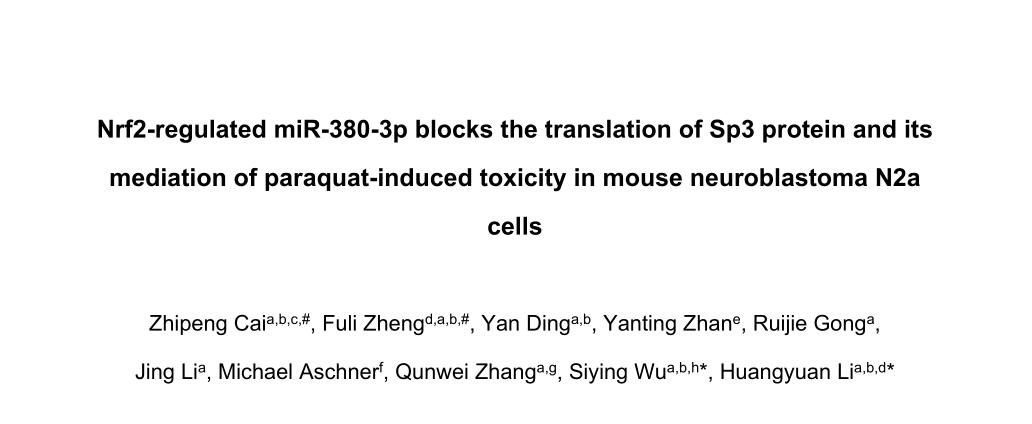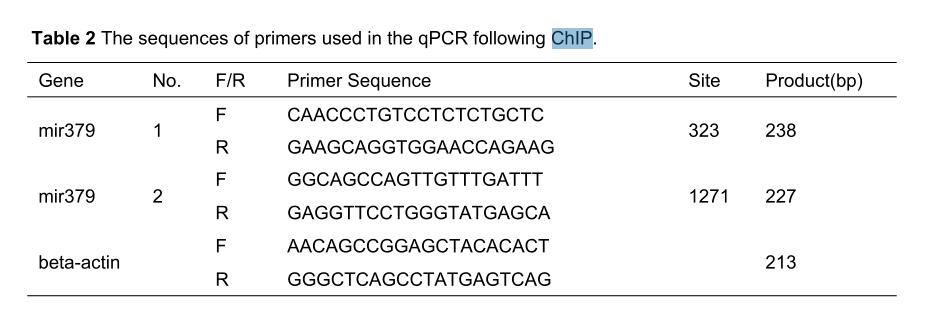
摘要
Laboratorial and epidemiological research has established a relationship between paraquat (PQ) exposure and a risk for Parkinson’s disease. Previously, we have investigated the effects of nuclear factor erythroid 2 related factor 2 (Nrf2) and microRNAs in PQ-induced neurotoxicity, addressing the function of miR-380-3p, a microRNA dysregulated by PQ, as well as Nrf2 deficiency. Nrf2 is known to mediate the expression of a variety of genes, including non-coding genes. By chromatin immunoprecipitation, we identified the relationship between Nrf2 and miR-380-3p in transcriptional regulation. qRT-PCR, western-blots, and dual-luciferase reporter gene assay showed that miR-380-3p blocked the translation of the transcription factor Sp3 in the absence of degradation of Sp3 mRNA. Results based on cell counting analysis, annexin v-fluorescein isothiocyanate/ propidium iodide double-staining assay and propidium iodide staining showed that overexpression of miR-380-3p inhibited cell proliferation, increased the apoptotic rate, induced cell cycle arrest and intensified the toxicity of PQ in mouse neuroblastoma (N2a) cells. Knockdown of Sp3 inhibited cell proliferation and eclipsed the alterations induced by miR-380-3p in cell proliferation. Two mediators of apoptosis and cell cycle identified in previous studies as Sp3-regulated, namely cyclin-dependent kinase inhibitor 1 (p21) and calmodulin (CaM), were dysregulated by PQ, but not Sp3 deficiency. In conclusion, Nrf2-regulated miR-380-3p inhibited cell proliferation and enhanced the PQ-induced toxicity in N2a cells potentially by blocking the translation Sp3 mRNA. We conclude that CaM and p21 were involved in PQ-induced toxicity.
Keywords: paraquat, neurotoxicity, Nrf2, miR-380-3p, Sp3, p21, CaM


伯信合作技术:BSP、ChIP
原文链接:https://doi.org/10.1093/toxsci/kfz162




